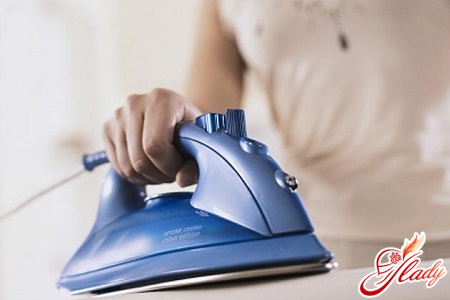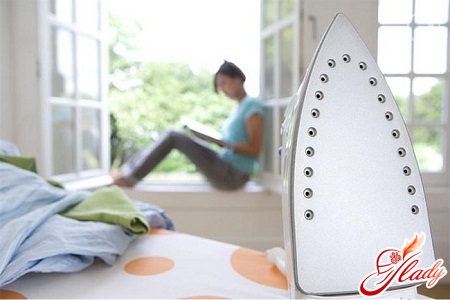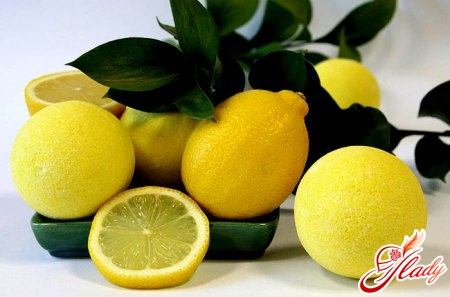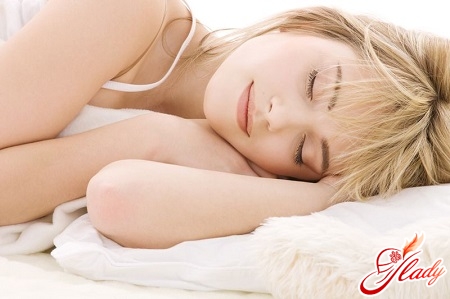 Remember the children's riddle:"A steamship sails, now back, now forward, and behind it such a smooth surface, not a wrinkle in sight"? This is about it, about an iron - an irreplaceable and necessary thing in the household. Of course, every home has an iron (or even more than one!), but it happens that either the iron itself breaks down, or the housewife intends to get a more modern model of the iron. Or it may be that a new iron is bought for someone as a gift. In any case, we go straight to the home appliance store and choose what we like. And it is at this moment that the question arises of how to choose an iron so that the price is right and the quality suits us. And the problem of choice actually becomes almost insoluble: how to understand all the variety of modern irons offered to us? In addition, at first glance, they are all the same. However, you will still have to make a choice, so it is worth finding out how they (irons) differ and how to choose an iron of the right model. But first of all, let's find out what types of irons there are.
Remember the children's riddle:"A steamship sails, now back, now forward, and behind it such a smooth surface, not a wrinkle in sight"? This is about it, about an iron - an irreplaceable and necessary thing in the household. Of course, every home has an iron (or even more than one!), but it happens that either the iron itself breaks down, or the housewife intends to get a more modern model of the iron. Or it may be that a new iron is bought for someone as a gift. In any case, we go straight to the home appliance store and choose what we like. And it is at this moment that the question arises of how to choose an iron so that the price is right and the quality suits us. And the problem of choice actually becomes almost insoluble: how to understand all the variety of modern irons offered to us? In addition, at first glance, they are all the same. However, you will still have to make a choice, so it is worth finding out how they (irons) differ and how to choose an iron of the right model. But first of all, let's find out what types of irons there are.
Types of modern irons
Of course, they are not intended for this purpose.differ: the task of any iron is to iron. But depending on how easily irons cope with this task, they can be classified into simple and advanced models. The simplest irons are the cheapest. They are not equipped with additional functions that make the ironing process easier and more comfortable. Their only additional function is a temperature regulator for different types of fabrics. The disadvantage of simple irons: the need for additional (manual) moistening of the product. Advantages - low price and high reliability compared to more complex models. But for some reason, manufacturers today produce a very small number of such simple models, giving preference to irons with additional functions. Iron with a sprayer (without steaming). You are also unlikely to find a large assortment of such irons in stores. This is explained by the low demand for such models. They are more expensive than simple irons, and the spray function is not very effective: such an iron, as well as simply cannot smooth out heavily wrinkled fabric without additional manipulation. Steam iron. This is the most popular model. Such irons are both willingly bought and actively produced. What explains the great popularity of steam irons? Such an iron is multifunctional: it can be used for both dry and wet ironing. It is undoubtedly very convenient to use: it has special grooves for ironing fabric under fasteners and a high degree of glide. Ideally irons any item, and thanks to the steaming function - even heavily wrinkled fabrics. And the price of steam irons is quite affordable. There are also steam stations, or irons with a steam generator. They are much more expensive than steam irons and are usually intended not for domestic, but for professional use (in studios, laundries, workshops). And one more type of irons that you can see on store shelves is travel irons. They are compact (small in size and have a folding handle) and are indispensable on a business trip or on the road. But, at the same time, they have a minimal set of functions and low power, which is also an important factor when choosing an iron.
Power, or heating ability of the iron
Before electric irons came into existence, peopleused hot coals, kerosene, alcohol or gas burners to heat this ironing device. Modern irons are heated by electric heaters with different power measured in watts (W). This information is indicated in the product passport. How to choose an iron depending on its power? Irons with low power (less than one thousand three hundred watts) are quite rare today. They are not very convenient to use - they heat up for a long time, do not maintain a high temperature in steaming mode. And there is a need for them only if the electrical wiring in your home is weak. The average power of an iron is from one thousand six hundred to two thousand watts. Today, this is perhaps the most economical and at the same time quite a good choice. Such an iron will cope with small volumes of things and is suitable for a small family. As practice shows, these irons are the most "popular" goods. The maximum power of an iron is over two thousand watts. These are very expensive irons. They are designed for very large volumes of work, but they also consume a lot of electricity. As a rule, such power of the iron is excessive for everyday use, and the expensive purchase does not justify itself.
Temperature conditions
This is another important characteristic of the iron.The heating temperature of its sole (working surface) is regulated by a special slider with divisions located on the body of the iron. Such a thermostat allows you to set the desired temperature for ironing various fabrics. This is especially important when working with "delicate" fabrics (synthetics and silk). The divisions-hints for adjusting the temperature are marked with markers-dots or inscriptions. To determine the temperature for a specific product, you should look at its tag - the heating mode of the iron will definitely be indicated there. What do the markers on the thermostat mean?
- One point (or the inscription "nylon" (synthetics), "silk" (silk) is a mode for light fabrics that are ironed at low temperature: nylon, silk, chiffon, crepe de Chine.
- Two points (or the inscription "wool" (wool) - the temperature suitable for woolen and half-woolen fabrics.
- Three points (or the inscription "cotton" and "linen" (flax) - a mode for working with fabrics that require high temperatures: cotton, linen, drape, tweed, etc.

The sole, or working surface of the iron
Surprisingly, modern ironsSoles come in different types: stainless steel, aluminum, or metal ceramics (ceramics). What requirements should the working surface of an iron meet? First of all, it should be gentle on fabric, glide well, be durable, and distribute heat evenly. How do you choose the right iron based on these requirements? What are the qualities of iron soles made of different materials? The most common irons have stainless steel soles. The advantages of this material are: durability, easy to clean, glide well, and heat up quickly. Disadvantages: irons with steel soles are quite heavy and get dirty quickly. Modern manufacturers produce irons with improved glide qualities of a steel sole. To do this, special grooves (dents) are made on the soles to form an air cushion or a titanium coating is applied. All this reduces friction and increases the glide speed of the iron. Aluminum sole. The advantages of such irons are: light, glide well, heat up and cool down quickly, and are inexpensive. There is one drawback, but it is quite significant: susceptibility to deformation (scratches and metal burrs). But even damage to the sole of the iron that is invisible to the human eye can damage the fabric, leaving snags or cuts on it. Although some manufacturers of such irons make soles from anodized aluminum, which has increased strength. In addition, some irons have special removable aluminum attachments that also form an air cushion and prevent the appearance of shiny areas. Ceramic soles are also very common in modern iron models. Its advantages: increased sliding, high quality ironing, very easy cleaning from dirt. The main drawback is fragility. Irons with ceramic soles require especially careful handling, but will reward the hostess with excellent quality of work. And the latest know-how in the development of irons is a ribbed working surface. This effect is achieved by applying thin transverse stripes of heat-resistant enamel to the sole. It is on them that the highest temperature and the main force from pressing are concentrated. With such irons it is easy to iron even very overdried laundry. Another quality point of the iron's working surface is the holes for steaming. The main thing to remember when paying attention to this parameter is that the more of these holes, the better the ironing result.
Steam and Spray
Despite the fact that the task of these functions of the ironone (humidification), there are several ways to implement it: constant steam supply, turbo steam, vertical steaming, spray (spraying). Constant steam supply occurs at a high temperature, which turns water into steam. This steam supply can be adjustable (automatically or manually) or non-adjustable. It is best to buy an iron with the ability to adjust the steam. As a rule, modern irons are equipped with a multi-stage steaming mode. Each individual step is the intensity of the steam supply, measured in grams per minute, and the thicker or more wrinkled the fabric, the more intense the mode required for steaming it. Turbo steam, or steam boost. This function is necessary for smoothing denim, linen and cotton items, as well as for overdried laundry. The steam boost (increased steam supply) is adjusted manually by pressing a special button. A very convenient function, especially since it is used only when necessary. Steam supply in a vertical position, or vertical steaming, makes it possible to iron (steam) clothes and curtains without removing them from a hanger or curtain rod. The function is quite new, but very popular, and therefore almost all manufacturers produce models of irons with vertical steaming. Spraying is necessary when ironing overdried linen or items made of thin fabrics. Water is thrown out in small and thin streams in front of the iron's nose and moistens the fabric. This is very convenient when ironing cuffs, pockets, folds and other small details. This function can also be activated by pressing a special button. How to choose the right iron with a steaming or spraying function? First of all, you need to pay attention to the water tank. Ideally, its capacity should be no less than two hundred and no more than three hundred milliliters. It would also be good if this tank was transparent. And another important detail when choosing an iron with steaming is the water tank. an anti-scale cartridge that protects the sole of the iron from scale. But if there is no such cartridge, then you just need to use distilled or boiled water for steaming.
Other factors of iron selection
In addition to the basic characteristics of the iron, when it isWhen choosing, you should also pay attention to other "little things" that can affect both the quality of the product itself and the comfort of working with it. What are we looking at?
Here are, perhaps, all the main points thatis worth paying attention to when choosing an iron. Well, which iron to choose from the point of view of design is already a matter of your taste. Manufacturers try their best, providing us with all sorts of iron models: for every taste and wallet thickness. So you can (and should!) choose exactly what suits you in all respects. We advise you to read:







